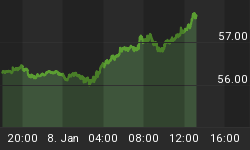It’s 2010 in the aftermath of the Great Recession. Several large retail chains announce plans to shutter dozens of stores. Investors mostly shrug their shoulders and assume it’s soon going to be over once the economy fully recovers.
Fast forward to the present. It’s 10 years into America’s longest economic expansion, yet the retail apocalypse shows no signs of letting up; leaving in its wake thousands of abandoned malls dotting the country like ghost towns from a forgotten era.
More than 12,000 stores have so far fallen by the wayside, yet the bloodbath continues. The staggering rate of store closures has rocked the industry after reaching truly apocalyptic levels in recent years. In 2017, retailers shuttered a record-breaking 102 million square of feet of store space—2018 proved far worse after another 155 million square feet of space followed suit. Well, 2019 is likely to see more of the same with another 4,300 stores about to hit the retail graveyard thus eclipsing 2018’s tally of 3,800 stores.
The list of unfortunate retailers that are about to become another sad statistic is made up of familiar names and not-so-familiar ones. Payless tops the list after filing for bankruptcy a second time. The discount retailer will shutter all its 2,500 stores after failing to find a buyer. Gymboree comes second while Shopko and Performance Bicycle round off the list of retailers that plan to close more than 100 stores. All the four retailers have already filed for bankruptcy and will undergo full or partial liquidations.
Here’s a rundown of the list:

(Click to enlarge)
Source: Business Insider
But should Amazon shoulder all the blame for the sad state of traditional North American retail?
Amazon to blame?
Investors love to pin the blame for failed or dying icons like Sears, Macy’s and JC Penney on the growing trend of online companies, particularly Amazon: “It’s all Amazon’s fault!” they cry every time more store closures are announced. Amazon certainly has a hand in it—a company that accounts for a dollar for every $17.50 spent on retail sales but growing at a rate 10 times the industry average will muddy the water for a lot of competitors. Add the fact that Amazon has essentially become the ‘everything store’ and its impact cannot be understated. Related: Scientists Take Rare Look Inside 'Wire Gold' Specimen
Amazon has no doubt rightfully earned some of the acrimonies. Early on, it was christened the ‘suicide bomber of retail’ due to its incessant price wars and practice of cutting prices to the bone thus leaving itself, and everybody else, feeding off scraps. Amazon did refine its game somewhat after its cloud business, AWS, matured and become hugely profitable but it still retains a major price lead over other online retailers.
But simply blaming Amazon and its ilk for the demise of so many retail operations is being simplistic and failing to look at the whole picture. First off, as popular as online shopping has become, e-commerce sales accounted for just 14.3 percent of retail sales in 2018. Amazon is, of course, overrepresented in that category after gobbling up 40 percent of all online dollars. Still, it means that roughly 85 percent of all U.S. retail sales are still done in brick-and-mortar stores.
So, if Amazon and online shopping are not killing the mighty department store, who’s to blame? Here are the real reasons why American retail is bleeding out:
#1. etailers expanded too aggressively
American retail entered a golden age in the 1990s which led to a rapid expansion of store real estate. Problem is that they went overboard leading to excessive amounts of storage space. When the recession hit, these stores had far less foot traffic and many were never able to fully recover.
Related: Abysmal Retail Sales Have Wall Street Scratching Head
It’s interesting to note that even after the rampant closures, the U.S. still has around 23.5 square feet of retail space per capita which appears insane compared with 16.4 square feet in Canada and 11.1 square feet in Australia.
#2. Consumer shopping habits are changing
Ok, Amazon and its brethren are to blame here. Before the convenience of online shopping came along, people were happy to spend whole afternoons strolling around those gigantic malls. Many people still love the experience of physical shopping, but many others now find it more convenient to shop in their pajamas at home. For this growing group of people, shopping has become more transactional and less of a pastime.
#3. Price comparison is so easy
There was a time when buying a shirt or dress meant visiting a Macy’s store and picking it up. Nowadays, you can simply scan the UPC code and find the cheapest price (either online or in the mall). Alternatively, you could visit their e-commerce sites and compare prices between Macy’s and JC Penney. With numerous price comparison tools available, your choices are near-limitless. It’s a big reason why electronic retailers such as Best Buy have been having a tough time.
#4. Off-price retailers are thriving
One thing that media outlets commonly neglect to mention is that not all retailers are being killed by the retail apocalypse. Off-price retailers such as TJ Maxx, Ross Stores, Costco and Marshalls are doing just fine. These retailers not only use the same price-slashing tactics that Amazon uses (sometimes making it up through membership subscriptions in the case of Costco) but also offer a different shopping experience that even Amazon cannot easily replicate.
In other words, they have reduced their susceptibility to the giant online retailer.
By Alex Kimani for Safehaven.com

















